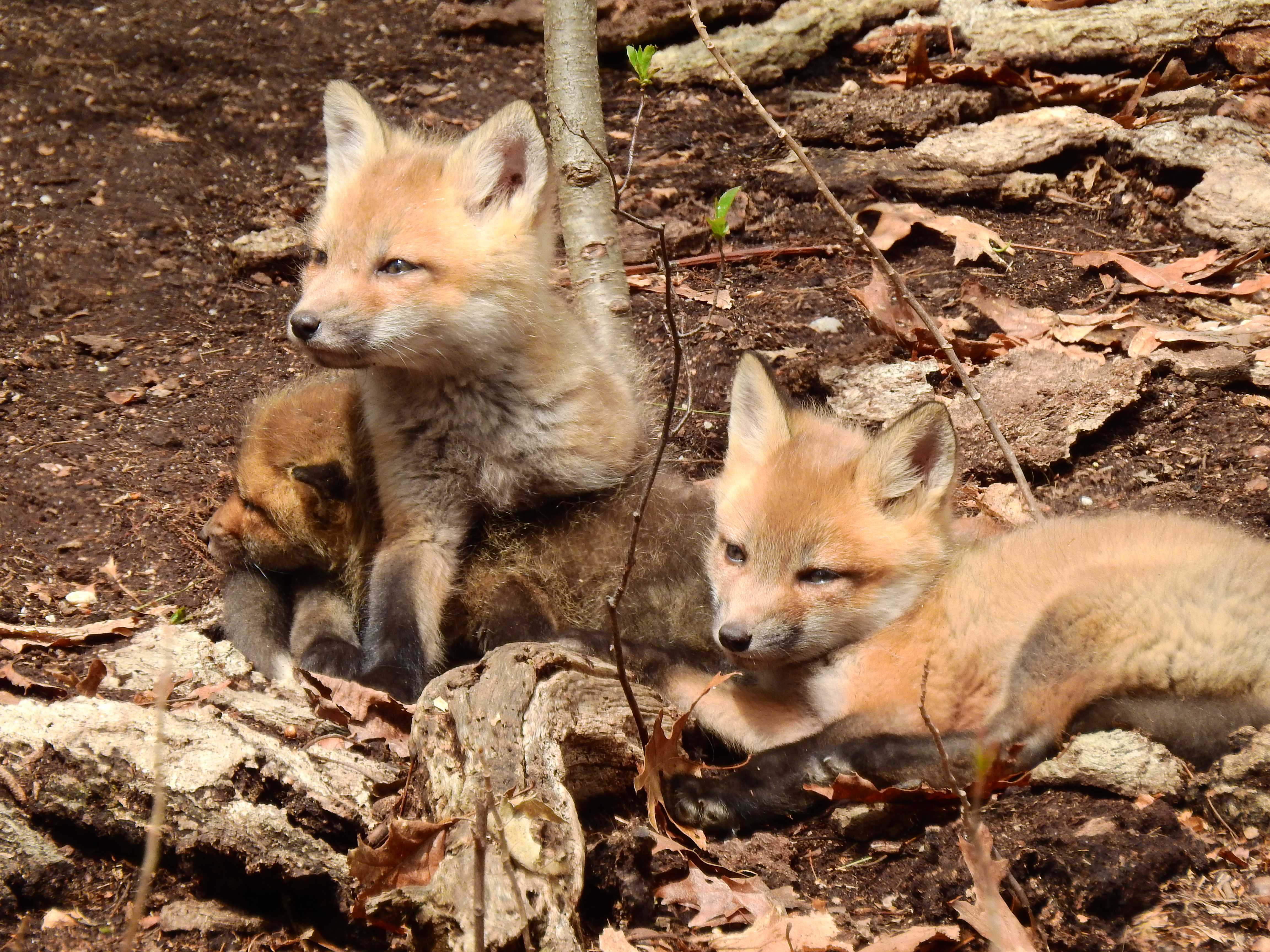Foxes on the Red !
Last year, park patrons and staff got a huge kick out of the fact that Bethpage State Park had RED foxes on our RED course! Not just the usual sighting of an adult fox running between fairways either... but a group of eight fox pups in their den! This was documented in early April.
The forested area they called home was not just complimented to their species name... but actually a location that fulfilled their habitat needs.
What are the Characteristics of a Typical Fox Den?
 Fox dens are usually in lower-lying areas. In a forest, this includes created burrows, fallen tree trunks or the space under tree roots. Where natural habitats are limited, foxes create natal dens under porches or sheds.
Fox dens are usually in lower-lying areas. In a forest, this includes created burrows, fallen tree trunks or the space under tree roots. Where natural habitats are limited, foxes create natal dens under porches or sheds. Luckily at Bethpage State Park, the latter is not needed and foxes have their pick of the various woodlands that line our golf courses.
An important feature that also makes for a good den is understory cover. Tree branches and shrubs provide a sense of security and help pups stay out of sight. While considered a synanthropic species (animals that have learned to live and adapt to being in close proximity to humans), foxes still tend to be reclusive creatures. With that in mind, please keep a respectful distance from them if you happen to see them out on the golf course.
Where are Foxes on the Food Chain ?
Foxes have very diverse diets but typically eat voles, mice, rabbits and birds (of all sizes). Staff at Bethpage State Park actually caught some of the pups feeding on the carcass of a Canadian Goose! However, when prey is unavailable, foxes are resourceful. Their diet can change to include fruits and berries too. Overall, this makes them omnivores.
 |
| A vixen (female fox) in full focus to hunt prey. |
With that in mind, survival of pups in the wild are not as high as one would hope. The upside is that foxes have multiple offspring. An average litter is 6 pups (which means Bethpage State Park's litter was above average for 2021!). Red foxes also mature quickly and breed young, another advantage they have towards survival.
How do Foxes Care for Their Young?
Prey is brought back to the den by parents who hunt at quieter times of the day (dusk, dawn and at night). Parental care is very strong amongst Red Foxes and goes beyond simply providing food. When foxes are just weeks old, the mother will regurgitate food for her young. When they grow to be a few months old, pups will eat on their own but still depend on adults to hunt for food.
Any observer will notice that being well-cared for and fed sure does enable pups to be animated and free-spirited creatures! As you can see in the video below, skulks are incredibly close-knit too.
What are Foxes Up To Now...In The Winter?
Red Foxes are not a hibernating species. During the Winter, foxes develop thicker coats and bask in sunlight for warmth. January to February is mating season. This means that this time of year, one might hear a male fox court a vixen or even see a fox pair hunting together on the fairways. By Spring, we hope to spot a new den and the next generation of foxes at Bethpage State Park!








Comments
Post a Comment